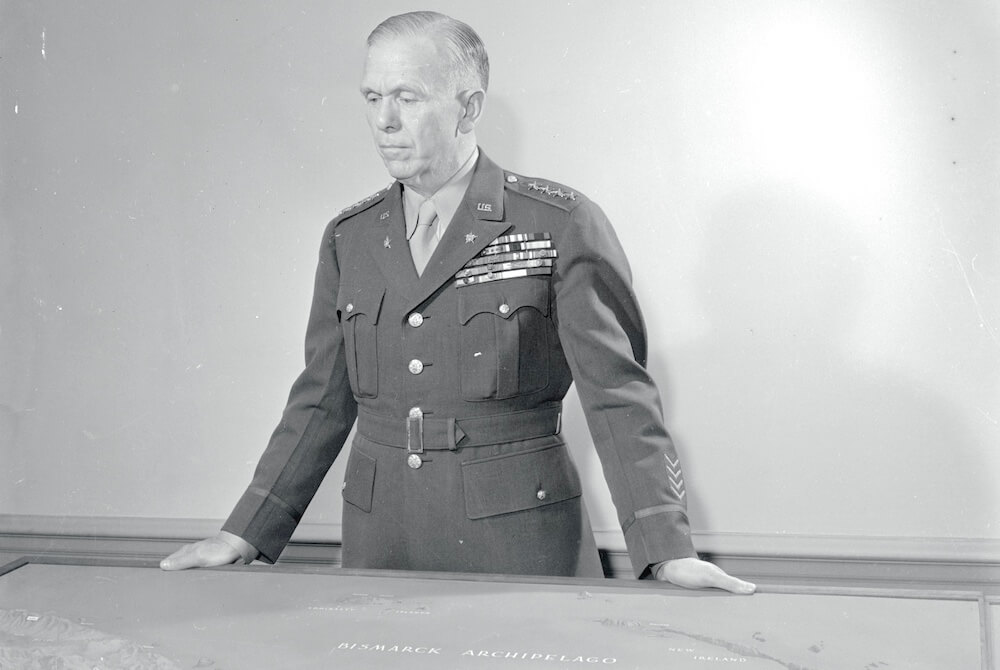[ad_1]

The contributions of U.S. Army Chief-Of-Staff General George C. Marshall.

PINEHURST, NORTH CAROLINA | The most important man in Pinehurst this week may be someone with whom you are not familiar. The most important man in Pinehurst, or MIMIP, is General George C Marshall, the architect of the Marshall Plan, which began the economic recovery of many ravaged European nations after the end of the Second World War. Who knows, who dares foretell, how the world might look in 2024 if Marshall had not announced this program when he gave the commencement speech at Harvard University on June 5, 1947, saying it was “directed not against any country or doctrine but against hunger, poverty, desperation and chaos.”

Testimony to the importance of Marshall came from the highest quarters. Winston Churchill referred to Marshall as “the organizer of Allied victory. It was his strategic planning that led to the Allied victory [in World War II] in Europe and in the Pacific and the unconditional surrender of Germany and Japan.”

Marshall lived the last 15 years of his life in Liscombe Lodge on Linden Road, Pinehurst, in what was then a cottage but has since been considerably extended. Like Tufts, Dedman Sr. and Ross, he is dead – he died in October 1959 – but his enormous legacy lives on in a marble memorial flanked by two brown wooden benches in a flag-bedecked glade of trees in the V formed by the junction of Carolina Vista and Cherokee Road. He is described as a “Citizen of Pinehurst” on this monument.

It is easy to ignore this glade in the hustle and bustle surrounding the 124th U.S. Open because the eye is caught by the burnished gold of the cupola of the Carolina Hotel sparkling in the distance. But hurry past the memorial, as many were doing last week, eager to catch a glimpse of competitors in the U.S. Open taking place across the road, and the opportunity to learn about one of the greatest men in U.S. history will be lost.

Born on December 31, 1880, in Uniontown, Pennsylvania, Marshall became a five-star general in the Army. He was chief of staff (1939-45), secretary of state (1947-49) and secretary of defense (1950-51), the only person to have filled these three offices. In December 1993, he was awarded the Nobel Peace Prize. He died on October 16, 1959, at age 78. Part of the tribute on his memorial reads: “He was a true internationalist who sought peace for the world through cooperation and understanding among all nations.”

“He was known for his honesty and candor. He often told military leaders what they did not want to hear. He valued public service. He was a professional soldier, and he thought public service was the duty of an American.”

“Most people here knew he was an important military person,” Moriarty continued. “Pinehurst allowed him to have a normal life as any military person, not a military superstar. After the war people had to know about the European recovery plan, but maybe they didn’t know it as the Marshall Plan as we know it now. He was very much known as a man of the people.” “It was while he was here in Pinehurst that he found out he had won the Nobel prize, and while he was here many dignitaries came to see him: Queen Frederica of Greece, President Eisenhower and Lady Astor.”
He was Time magazine’s “Man of the Year” for 1943 and 1947. In 1947 Churchill described Europe “as a rubble heap, charnel house, a breeding ground for pestilence and hate.” Marshall agreed and commented: “at the same time, the patient is sinking while the doctors deliberate.”
[ad_2]



